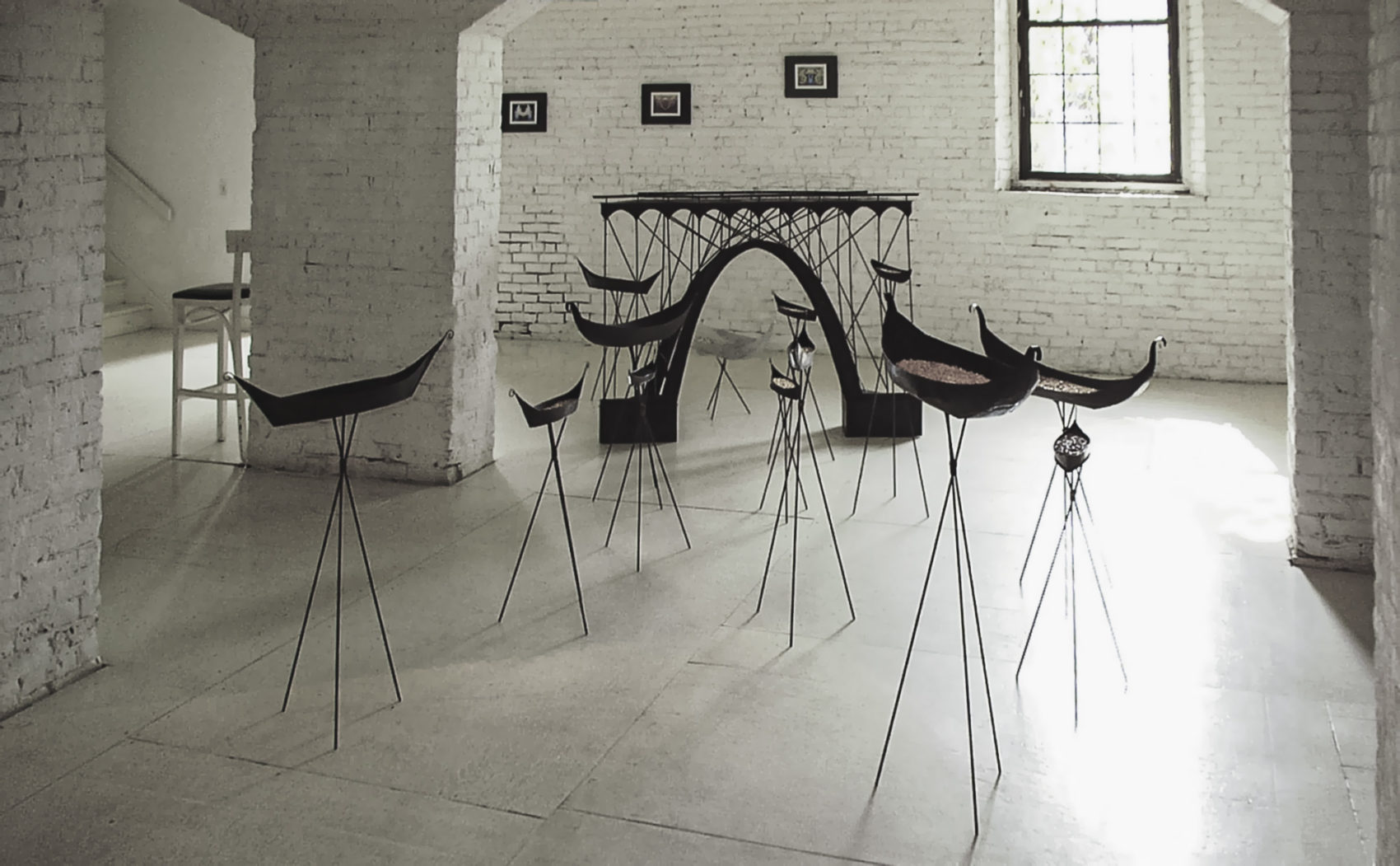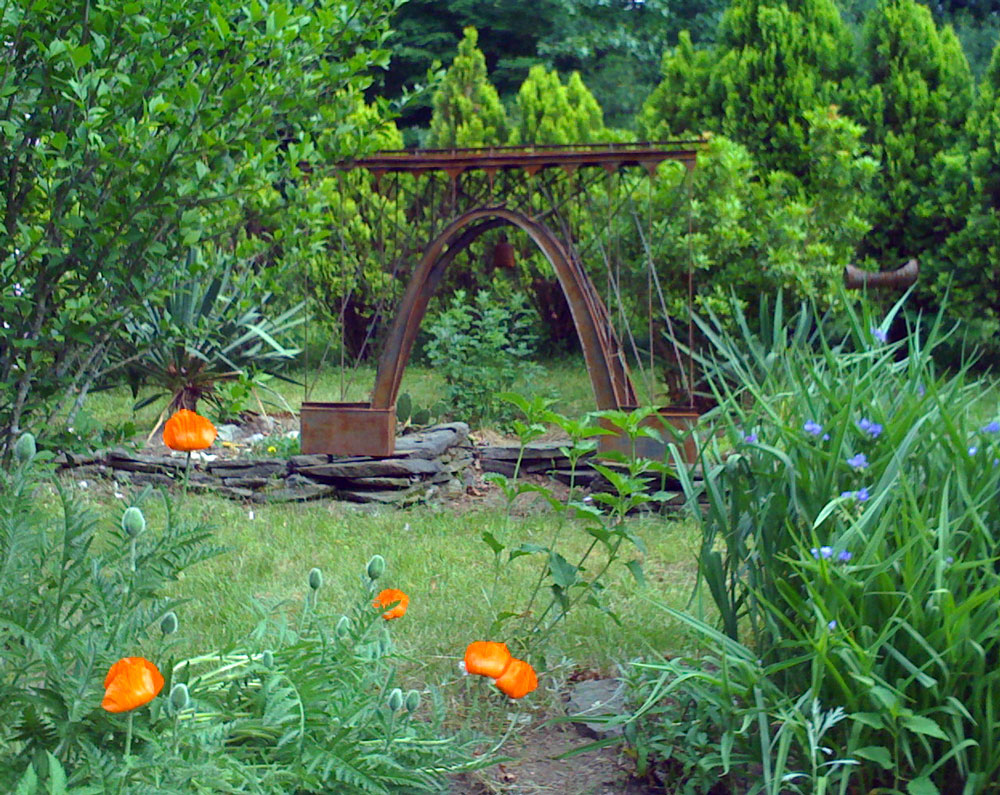Around the end of the 20th Century, I hatched an idea to build a sculptural installation involving 33 metal boats, each filled with a symbolic cargo and arranged so as to converge on a passage through a steel arch bridge.
The idea was somewhat informed by numerology, coincidence, our collective anticipation of the new millennium, and a vague interest in the mystique and lore surrounding Freemasonry. I was nearing my 33rd birthday, 33 happened to be my favorite number at the time, and 33 is the highest degree in the Scottish Rite.
But the larger metaphor was simply one of passage. The opening in the bridge represented a rite of passage from one part of life to another, or from life to death and whatever lay beyond. It also represented an intersection between the realities of what was going on in the water under the bridge, vs. the realities that were being connected by the platform of the bridge.
Midnight Freight
I first showed the installation at the Berkshire Artisans Gallery in Pittsfield, Massachusetts in 1999, under the title of Midnight Freight. Freight in this sense represented the “baggage” that we all carry with us from our childhood throughout our lives. And the midnight aspect hinted at the subconscious, sub-rosa nature of these things. The materials that filled the boats were things that I associated in some way with my childhood: sweetgum pods, old pennies, acorns, bony-fingered twigs from a cottonwood tree, half-burned candles, red Georgia clay, etc.
Three Sisters
Later, I showed the installation again with significantly fewer boats, different cargo, and configured to speak to a different theme. Living With the River was a juried show that took place at the Canal Gallery in Holyoke, Massachusetts in 2001. Artists were asked to weigh in on the influence they felt by living in the vicinity of the mighty Connecticut River that cuts through our fertile Pioneer Valley.
Three Sisters is an expression symbolizing the corn, beans, and squash that are staples of various Native American groups, many of whom lived in this region in abundance before the appearance of European Settlers. In this installation, the boats carried dried corn kernels, dried beans, and squash seeds.
In this way, my piece spoke to the inescapable history that we shoulder in the course of our modern-day life with the river. Namely, that we must recognize and honor the other cultures that preceded us and—in their own ways—lived with the river.
Technical Details
While the diaspora of boats has mostly made its way out into the private collections of the world, the bridge itself remains in my private collection. The bridge is made of welded and brazed steel (brazing is where brass—which has a lower melting point than steel—is used as the joining metal). It has rusted to a nice patina.

